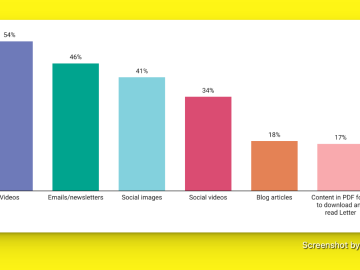Search Engine Optimization (SEO) is essential for improving your website’s visibility on search engines. But how do you know if your SEO efforts are working? That’s where SEO analytics comes in. By measuring and analyzing key data points, you can understand how well your SEO strategy is performing and identify areas for improvement.
In this blog, we’ll explore how to measure and analyze your SEO performance effectively. Let’s dive in!
What is SEO Analytics?
SEO analytics involves collecting, tracking, and interpreting data from your website to evaluate how well it is performing in search engines like Google, Bing, or Yahoo. This data helps you see which parts of your SEO strategy are effective and which ones need improvement.
By looking at various metrics such as keyword rankings, traffic, and conversion rates, SEO analytics gives you a comprehensive view of how your website is doing. It’s like checking the health of your website by regularly monitoring important indicators.
Why is SEO Analytics Important?
Without proper SEO analytics, you’re essentially flying blind. Here’s why measuring and analyzing your SEO performance is crucial:
-
Assess Success: SEO analytics helps you see what’s working and what’s not. Are your targeted keywords ranking well? Is your organic traffic increasing? Analytics answers these questions.
-
Improve Strategy: By identifying areas where your SEO is lacking, you can tweak and improve your strategy. For example, if a particular blog post isn’t performing well, you can optimize it further or replace it with better content.
-
Monitor Competition: SEO analytics allows you to keep an eye on competitors. You can analyze how they rank for specific keywords and compare their performance with yours.
-
ROI Tracking: If you’re investing time and money into SEO, analytics helps you measure the return on that investment. You can see whether your efforts are leading to more traffic, leads, or sales.
Key Metrics to Track for SEO Performance
Tracking the right metrics is essential for understanding your SEO performance. Let’s break down some of the most important ones:
Organic traffic refers to the number of visitors who come to your site from search engines without paid advertising. This metric shows how well your SEO is driving traffic to your site.
Your keyword rankings show how well your website is ranking for the keywords you’re targeting. If you’re ranking high for relevant keywords, it means your SEO efforts are working.
Bounce rate measures the percentage of visitors who leave your site after viewing just one page. A high bounce rate could indicate that visitors aren’t finding what they’re looking for, suggesting the need for better content or user experience.
Time on page measures how long visitors stay on each page of your website. If people spend more time on a page, it often means they find the content valuable and engaging.
Backlinks are links from other websites pointing to your site. They are one of the most important ranking factors in SEO. Analyzing the number and quality of backlinks can give insight into your website’s authority.
CTR is the percentage of people who click on your site after seeing it in the search engine results. A high CTR suggests your title tags and meta descriptions are compelling and relevant to searchers.
Your conversion rate measures how many visitors take a desired action, such as making a purchase or signing up for a newsletter. It’s a critical metric because it shows whether your SEO efforts are driving actual results.
Best Tools for SEO Analytics
There are several tools available to help you measure and analyze your SEO performance. Let’s take a look at some of the most popular ones:
- Google Analytics
Google Analytics is a free tool that provides detailed insights into your website’s traffic. You can track organic traffic, bounce rate, time on site, and much more. It’s one of the most comprehensive tools for understanding how visitors interact with your website.
- Google Search Console
Google Search Console is another free tool from Google that helps you monitor your website’s presence in search results. It shows which queries are driving traffic, how your site is performing in terms of mobile-friendliness, and any issues like crawling errors.
- SEMrush
SEMrush is a paid tool that offers a wide range of SEO analytics features, including keyword tracking, competitor analysis, and backlink auditing. It’s especially helpful for keeping an eye on how your competitors are performing.
- Ahrefs
Ahrefs is another paid tool known for its robust backlink analysis. It’s excellent for tracking the quality and quantity of backlinks pointing to your site and for conducting competitor analysis.
- Moz
Moz offers both free and paid tools for keyword tracking, backlink analysis, and on-page SEO auditing. It’s user-friendly and great for businesses just starting with SEO analytics.
How to Analyze Your SEO Data?
Once you’ve gathered your SEO data, it’s time to analyze it. Here are a few steps to get started:
Before diving into the data, it’s important to have clear goals. Are you aiming to increase organic traffic? Improve keyword rankings? Knowing your objectives helps you focus on the right metrics.
- Compare Current Performance with Past Performance
Look at historical data to see how your website has evolved. Are your rankings improving? Is your organic traffic increasing month by month? Comparing current performance with past data helps you understand trends.
SEO analytics should help you spot weaknesses. For example, if a particular page has a high bounce rate, investigate why. Is the content irrelevant? Is the page loading too slowly? Identifying weak spots allows you to make improvements.
It’s helpful to segment your traffic into different groups, such as new vs. returning visitors or mobile vs. desktop users. This helps you better understand your audience and how they interact with your site.
Tips for Improving SEO Based on Analytics
Based on the insights you gather from your SEO analytics, here are a few tips for improving your performance:
If your SEO data shows a high bounce rate on mobile devices, it’s time to focus on mobile optimization. Ensure your website is responsive and loads quickly on smartphones and tablets.
If a page has a low time-on-page or a high bounce rate, consider improving the content. Add more value by answering visitors’ questions clearly and concisely, or include images, videos, and infographics to make the page more engaging.
- Build High-Quality Backlinks
If your backlink profile is weak, start focusing on acquiring high-quality backlinks. This can be done through guest blogging, creating shareable content, or collaborating with industry influencers.
Good SEO isn’t just about keywords. Ensure that your website provides a great user experience. Improve navigation, reduce loading times, and ensure your site is visually appealing and easy to use.
Conclusion
SEO analytics is an essential part of any successful SEO strategy. By measuring key metrics like organic traffic, keyword rankings, and conversion rates, you can gain valuable insights into what’s working and where improvements are needed. With the right tools and a data-driven approach, you can continually refine your SEO strategy to drive better results.
Remember, SEO is an ongoing process. Regularly analyzing and adjusting your tactics based on SEO analytics will help you stay ahead of the competition and maximize your website’s performance.
Source: Busines NewsWire





